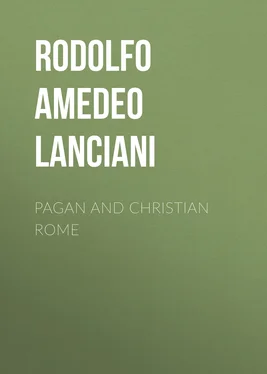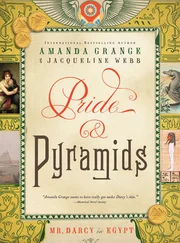Rodolfo Amedeo Lanciani - Pagan and Christian Rome
Здесь есть возможность читать онлайн «Rodolfo Amedeo Lanciani - Pagan and Christian Rome» — ознакомительный отрывок электронной книги совершенно бесплатно, а после прочтения отрывка купить полную версию. В некоторых случаях можно слушать аудио, скачать через торрент в формате fb2 и присутствует краткое содержание. Жанр: foreign_edu, История, История, на английском языке. Описание произведения, (предисловие) а так же отзывы посетителей доступны на портале библиотеки ЛибКат.
- Название:Pagan and Christian Rome
- Автор:
- Жанр:
- Год:неизвестен
- ISBN:нет данных
- Рейтинг книги:3 / 5. Голосов: 1
-
Избранное:Добавить в избранное
- Отзывы:
-
Ваша оценка:
- 60
- 1
- 2
- 3
- 4
- 5
Pagan and Christian Rome: краткое содержание, описание и аннотация
Предлагаем к чтению аннотацию, описание, краткое содержание или предисловие (зависит от того, что написал сам автор книги «Pagan and Christian Rome»). Если вы не нашли необходимую информацию о книге — напишите в комментариях, мы постараемся отыскать её.
Pagan and Christian Rome — читать онлайн ознакомительный отрывок
Ниже представлен текст книги, разбитый по страницам. Система сохранения места последней прочитанной страницы, позволяет с удобством читать онлайн бесплатно книгу «Pagan and Christian Rome», без необходимости каждый раз заново искать на чём Вы остановились. Поставьте закладку, и сможете в любой момент перейти на страницу, на которой закончили чтение.
Интервал:
Закладка:

Lamp of Annius Ser......, with figure of the Good Shepherd.
Another question concerning the behavior of early Christians has reference to their military service under the imperial eagles, and to the cases of conscience which may have arisen from it. On this I may refer the reader to the works of Mamachi, Lami, Baumgarten, Le Blant, and de Rossi, 13 13 See Bullettino di archeologia cristiana , 1865, p. 50.
who have discussed the subject thoroughly. Speaking from the point of view of material evidence, I have to record several discoveries which prove that officers and men of the cohortes prætoriæ and urbanæ could serve with equal loyalty their God and their sovereign.
In November, 1885, I was present at the discovery of a marble sarcophagus in the military burial-grounds of the Via Salaria, opposite the gate of the Villa Albani. It bore two inscriptions, one on the lid, the other on the body. The first defies interpretation; 14 14 It contains the words PETRO LILLVTI PAVLO. They are surely genuine and ancient. I examined them in company with Mommsen, Jordan, and de Rossi, and they attributed them to the beginning of the third century of our era. The best suggestion regarding their origin is that they belong to a person, probably Christian, who used the name Petrus as gentilitium , and Paulus as cognomen , and who was the son of Lillutus, however barbaric this last name may sound.
the second mentions the name of a little girl, Publia Ælia Proba, who was the daughter of a captain of the ninth battalion of the prætorians, and a lady named Clodia Plautia. They were all Christians; but for a reason unknown to us, they avoided making a show of their persuasion, and were buried among the gentiles.
Another stray Christian military tomb, erected by a captain of the sixth battalion, named Claudius Ingenuus, was found, in 1868, in the Vigna Grandi, near S. Sebastiano. Here also we find the intention of avoiding an open profession of faith. A regular cemetery of Christian prætorians was found in the spring of the same year by Marchese Francesco Patrizi, in his villa adjoining the prætorian camp. It is neither large nor interesting, and it seems to prove that the gospel must have made but few proselytes in the imperial barracks.
We must not believe that the transformation of Rome from a pagan into a Christian city was a sudden and unexpected event, which took the world by surprise. It was the natural result of the work of three centuries, brought to maturity under Constantine by an inevitable reaction against the violence of Diocletian's rule. It was not a revolution or a conversion in the true sense of these words; it was the official recognition of a state of things which had long ceased to be a secret. The moral superiority of the new doctrines over the old religions was so evident, so overpowering, that the result of the struggle had been a foregone conclusion since the age of the first apologists. The revolution was an exceedingly mild one, the transformation almost imperceptible. No violence was resorted to, and the tolerance and mutual benevolence so characteristic of the Italian race was adopted as the fundamental policy of State and Church.
The transformation may be followed stage by stage in both its moral and material aspect. There is not a ruin of ancient Rome that does not bear evidence of the great change. Many institutions and customs still flourishing in our days are of classical origin, and were adopted, or tolerated, because they were not in opposition to Christian principles. Beginning with the material side of the question, the first monument to which I have to refer is the Arch of Constantine, raised in 315 at the foot of the Palatine, where the Via Triumphalis diverges from the Sacra Via.
ARCH OF CONSTANTINE
The importance of this arch, from the point of view of the question treated in this chapter, rests not on its sculptured panels and medallions,—spoils taken at random from older structures, from which the arch has received the nickname of Æsop's crow ( la cornacchia di Esopo ),—but on the inscription engraved on each side of the attic. "The S. P. Q. R. have dedicated this triumphal arch to Constantine, because instinctu divinitatis (by the will of God), and by his own virtue, etc., he has liberated the country from the tyrant [Maxentius] and his faction." The opinion long prevailed among archæologists that the words instinctu divinitatis were not original, but added after Constantine's conversion. Cardinal Mai thought that the original formula was diis faventibus , "by the help of the gods," while Henzen suggested nutu Iovis optimi maximi , "by the will of Jupiter." Cavedoni was the first to declare that the inscription had never been altered, and that the two memorable words—the first proclaiming officially the name of the true God in the face of imperial Rome—belonged to the original text, sanctioned by the Senate. The controversy was settled in 1863, when Napoleon III. obtained from the Pope the permission to make a plaster cast of the arch. With the help of the scaffolding, the scholars of the time examined the inscription, the shape of each letter, the holes of the bolts by which the gilt-bronze letters were fastened, the joints of the marble blocks, the color and quality of the marble, and decided unanimously that the inscription had never been tampered with, and that none of its letters had been changed.
The arch was raised in 315. Was Constantine openly professing his faith at that time? Opinions are divided. Some think he must have waited until the defeat of Licinius in 323; others suggest the year 311 as a more probable date of his profession. The supporters of the first theory quote in its favor the fact that the pagan symbols and images of gods appear on coins struck by Constantine and his sons; but this fact is easily explained, when we consider that the coinage of bronze was a privilege of the Senate, and that the Senate was pagan by a large majority. Many of Constantine's constitutions and official letters speak in favor of an early declaration of faith. When the Donatists appealed to him from the verdict of the councils of Arles and Rome, he wrote to the bishops: Meum judicium postulant, qui ipse judicium Christi expecto : "They appeal to me, when I myself must be judged by Christ." The verdict of the council of Rome against the sectarians was rendered on October 2, 313, in the "palace of Fausta in the Lateran;" the imperial palace of the Lateran, therefore, had already been handed over to the bishop of Rome, and a portion of it turned into a place of worship. The basilica of the Lateran still retains its title of "Mother and head of all churches of Rome, and of the world," ranking above those of S. Peter and S. Paul in respect to age.
Such being the state of affairs when the triumphal arch was erected, nothing prevents us from believing those two words to be original, and to express the relations then existing between the first Christian emperor and the old pagan Senate. At all events, nothing is more uncompromising than these two words, because the titles of Deus summus, Deus altissimus, magnus, æternus , are constantly found on monuments pertaining to the worship of Atys and Mithras. "These words," concludes de Rossi, "far from being a profession of Christianity engraved on the arch at a later period, are simply a 'moyen terme,' a compromise, between the feelings of the Senate and those of the emperor." 15 15 See de Rossi: Bullettino di archeologia cristiana , 1863, p. 49.—Rohault de Fleury: L'arc de triomphe de Constantin , in the Révue archéologique , Sept. 1863, p. 250.—W. Henzen: Bullettino dell' Instituto , 1863, p. 183.
Интервал:
Закладка:
Похожие книги на «Pagan and Christian Rome»
Представляем Вашему вниманию похожие книги на «Pagan and Christian Rome» списком для выбора. Мы отобрали схожую по названию и смыслу литературу в надежде предоставить читателям больше вариантов отыскать новые, интересные, ещё непрочитанные произведения.
Обсуждение, отзывы о книге «Pagan and Christian Rome» и просто собственные мнения читателей. Оставьте ваши комментарии, напишите, что Вы думаете о произведении, его смысле или главных героях. Укажите что конкретно понравилось, а что нет, и почему Вы так считаете.












